Kings and queens lie in their grounds, they tell the story of the capital’s history, they’re immortalised in art and literature, and they create a skyline like no other in the world – they are London’s magnificent churches
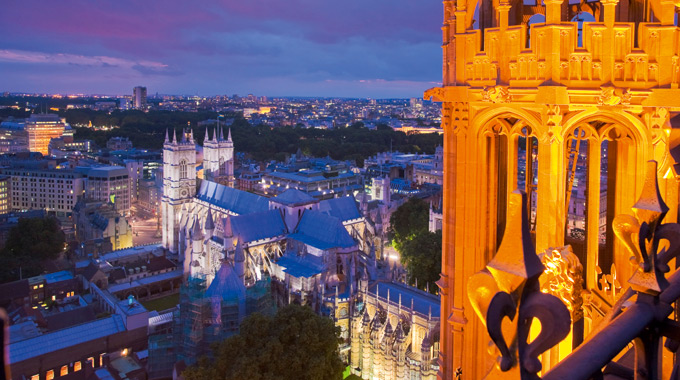
Charles Dickens confessed (in The Uncommercial Traveller), that although he had visited many churches in London, he was “profoundly ignorant” of the names of at least nine-tenths of them. However, among the few that he could recall was St Saviour’s, Southwark – the “church of old Gower’s tomb.” Dickens would still recognise much of this church’s fabric, but the name he would not. In 1905 St Saviour’s was elevated to cathedral status, and so was born Southwark Cathedral or, more correctly, the cathedral church of St Saviour and St Mary Overy. Originally founded in AD606, it is one of London’s oldest places of worship and its oldest Gothic-style church.
Whether it really was the tomb, or the stupendous interior of this most graceful of churches that triggered his memory we shall never know. Perhaps it was the majestic medieval choir or the soaring arches and stained glass of the nave. Maybe it was the richly gilded, deep red tomb of the 14th-century poet John Gower, a friend of Chaucer.
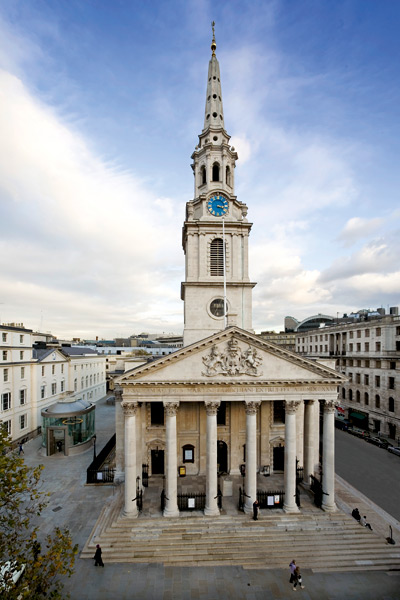
Sitting at the southern end of London Bridge, the cathedral is extremely close to Bankside – London’s original theatre district. Little wonder that it has such strong literary connections, being the final resting place of 17th-century dramatists John Fletcher and Philip Massinger. Additionally, a commemorative birthday service is held each year to mark Shakespeare’s birthday – his brother, Edmund, is buried here.
There are strong American connections, too. John Harvard was baptised here in 1607, thus the Harvard Chapel. And the life of Sam Wanamaker, responsible for the rebuilding of Shakespeare’s Globe, is marked by a memorial tablet. Oscar Hammerstein II, meanwhile, was a regular visitor and benefactor to the cathedral.
In terms of eye-popping church architecture, Southwark Cathedral takes some beating – particularly on the river’s south bank. However, there are more than a few churches on the north bank that are worthy contenders. Westminster Abbey and St Paul’s Cathedral are, naturally, among them. But, when considering these epitomic examples of ecclesiastic wondrousness, it is easy to overlook the smaller, yet equally inspiring cousins that stand, quite literally, in their shadows.
Just a footpath separates Westminster Abbey from St Margaret, Westminster – the church of the House of Commons. Founded during the 12th century, the present building dates from 1523 and is particularly noted for the 15th-century stained glass of its east window. Winston Churchill was married here, while the great and the good buried there include Sir Walter Raleigh and William Caxton.
Half a mile north, with a grand portico and mighty steeple overseeing proceedings in Trafalgar Square, St Martin-in-the-Fields has an equally illustrious history. Sometimes referred to as the parish church of Buckingham Palace, the current building was completed in 1726. It was, respectively, the first and last church encountered by troops as they arrived from or departed for the Great War on boat trains from nearby Charing Cross station.
Since then, and also through its work with the homeless, it has become known as “the church of the ever-open door” – a sobriquet it has more than continued to live up to. Those ever-open doors lead to an interior many of whose time-worn pews date from 1799. The over-riding feature, however, is the sumptuously gilded and painted plasterwork of the ceiling. Among those buried in the church are Thomas Chippendale, the cabinet maker and, in an earlier building, Nell Gwynne.
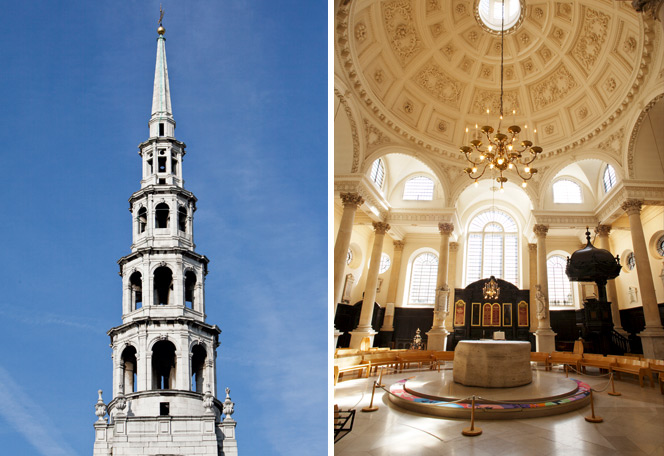
For whatever reason, some of London’s churches have fared better than others. And not a few, such as St Mary le Strand, have only just survived – in St Mary’s case largely due to the intervention in 1977 of Sir John Betjeman. Sat upon what is little more than an oversized traffic island on the Strand it is, nevertheless, much-loved and cherished once more. With its ornate carvings, it is claimed to have one of the capital’s finest interiors. Charles Dickens’ parents married here.
Further along the same street, St Clement Danes finds itself similarly surrounded by traffic. Nonetheless, this Wren restoration remains gloriously unintimidated. It saw further restoration during the 1950s, at which time it became the Central Church of the Royal Air Force. As such, the floor of the hugely spacious interior is set with slate badges of more than seven hundred RAF squadrons. Little wonder that it is occasionally referred to as an RAF station in its own right. Additional badges are affixed to the pillars, while the names of American airmen who died while stationed in Britain are recorded in a ledger. Previous incumbents include William Webb-Ellis of rugby football fame, while noted parishioners include Samuel Johnson – his regular seat being gallery seat number 18.
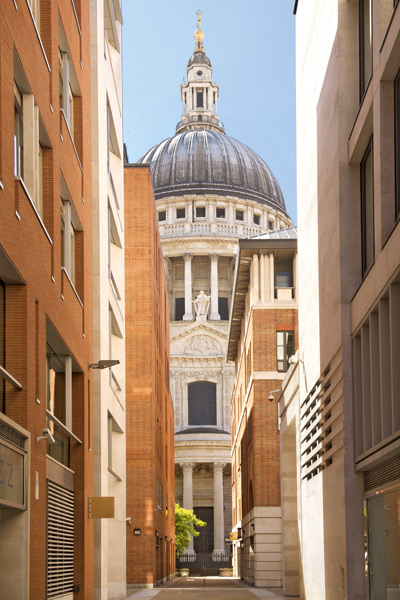
If Southwark Cathedral is south London’s jewel, then St Augustine, Kilburn must be north London’s. Built in the 1870s, it is one of the capital’s younger churches – but is none the less opulent for that. The brick tower and spire (both later 1890 additions) tickle the clouds at 78-metres high (254ft). The finely carved and decorated stone chancel is one of London’s finest, and some of Britain’s best Victorian stained glass examples are to be found here. The Victorians may well have gained a reputation for vandalising churches in the name of ‘improvement’, but here is living proof that one, architect J L Pearson, did not lose his way.
However, for consistency in quality and sheer numbers, one district outshines the rest of London: the City. It is a breathtaking fact that prior to the Great Fire, this compact little area – just one square mile – was home to 97 parish churches. Sir Christopher Wren rebuilt 51 after the fire, with more added during the 18th and 19th centuries. However, dwindling population, wartime destruction and redevelopment mean that now only 38 remain – still a phenomenal number for such a small area.
| next page >> |


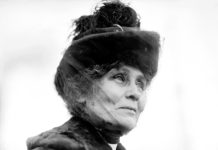


 © 2024
© 2024